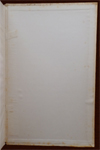100th
MP

|
THE
100th
MONKEY
PRESS |
|
|
|
Limited Editions by Aleister Crowley & Victor B. Neuburg |
|
Bibliographies |
|
Download Texts
»
Aleister
Crowley
WANTED !!NEW!!
|
|
ORPHEUS |
|
Image Thumbnails |
||||||||||||||||||||||||||||||||||||||||||||||||||||||||||||||||||||||||||||||||||||
|
Title: |
Orpheus. A Lyrical Legend. |
|
||||||||||||||||||||||||||||||||||||||||||||||||||||||||||||||||||||||||||||||||||
|
Variations: |
|
|||||||||||||||||||||||||||||||||||||||||||||||||||||||||||||||||||||||||||||||||||
|
Publisher: |
Society for the Propagation of Religious Truth (S.P.R.T.)1 |
|||||||||||||||||||||||||||||||||||||||||||||||||||||||||||||||||||||||||||||||||||
|
Printer: |
Turnbull and Spears, Edinburgh.3 |
|||||||||||||||||||||||||||||||||||||||||||||||||||||||||||||||||||||||||||||||||||
|
Published At: |
Boleskine, Foyers, Inverness.1 |
|||||||||||||||||||||||||||||||||||||||||||||||||||||||||||||||||||||||||||||||||||
|
Date: |
1905.1 |
|||||||||||||||||||||||||||||||||||||||||||||||||||||||||||||||||||||||||||||||||||
|
Edition: |
1st Edition. |
|||||||||||||||||||||||||||||||||||||||||||||||||||||||||||||||||||||||||||||||||||
|
Pages: |
Volume I: 156. Volume II: 148.1 |
|||||||||||||||||||||||||||||||||||||||||||||||||||||||||||||||||||||||||||||||||||
|
Price: |
State (c) priced at 1 crown (10 shillings) per volume.1 |
|||||||||||||||||||||||||||||||||||||||||||||||||||||||||||||||||||||||||||||||||||
|
Remarks: |
There are five different “editions” of this book. These are actually all from one typesetting and were so designated to impart a false idea of the book's popularity. This was apparently a common technique used to promote sales.6 The first “edition” has white boards. The second “edition” has yellow boards and page [6] reads “Second Edition.” The third “edition” has red boards and page [6] reads “Third Edition.” The fourth “edition” has blue boards and page [6] reads “Fourth Edition.” The fifth “edition” has olive-green boards and page [6] reads “Fifth Edition.”7 Title page printed in black and red.3 A few of these sets were issued bound as one volume.5 |
|||||||||||||||||||||||||||||||||||||||||||||||||||||||||||||||||||||||||||||||||||
|
Pagination:4 |
|
|||||||||||||||||||||||||||||||||||||||||||||||||||||||||||||||||||||||||||||||||||
|
Contents: |
- Warning - Exordium - Liber Primus Vel Carminum - Liber Secundus Vel Amoris - Liber Tertius Vel Laboris - Liber Quartus Vel Mortis |
|||||||||||||||||||||||||||||||||||||||||||||||||||||||||||||||||||||||||||||||||||
|
Author’s Working Versions: |
|
|||||||||||||||||||||||||||||||||||||||||||||||||||||||||||||||||||||||||||||||||||
|
Other Known Editions: |
|
|||||||||||||||||||||||||||||||||||||||||||||||||||||||||||||||||||||||||||||||||||
|
Bibliographic Sources: |
|
|||||||||||||||||||||||||||||||||||||||||||||||||||||||||||||||||||||||||||||||||||
|
Comments by Aleister Crowley: |
For some time, I had been contemplating a lyric poem in which everything in the world should be celebrated in detail. It was a crazy notion—one of those fantastic follies which is impossible in nature—a species of literary “squaring the circle”. I doubt whether it was a genuine impulse. Its motive was the vanity and vulgarity of attempting something big. It was the American passion for tall buildings and record processions in another form. It was the probably my reaction to the spiritual atmosphere of California. In any case, the worst happened. I began it! The best plan will be to describe what happened and get it over. It was not finished till the middle of 1904. Book I is in form a gigantic Greek ode. It celebrates all the forces of nature and the children of time. Orpheus invokes them in turn; and they reply. Book II describes the winning of Eurydice by Orpheus. It is entirely a monologue by him. My literary insanity is well indicated by my proposal to insert a five-act play, The Argonauts, afterwards published separately, as an incident in his wooing! Book III describes the visit of Orpheus to Hades; and contains the invocations of the necessary deities, with their replies. Book IV relates the death of Orpheus. Unwieldy as the poem is, it contains some of my best lyrics. Further, even conceding that the entire effort was a fiasco, it must be admitted that the task of writing it was an excellent discipline; it taught me a great deal about technique and its very awkwardness warned me what to avoid. — The Confessions of Aleister Crowley. New York, NY. Hill and Wang, 1969. Pages 223-224. ______________________________
At “Marlborough” we found the conditions for work very favourable. The firs step was to get rid of all other preoccupations. I revised Tannhäuser, wrote an introduction, typed it all out and sent it to the press. I put aside Orpheus and left aside Alice, An Adultery to ripen. — The Confessions of Aleister Crowley. New York, NY. Hill and Wang, 1969. Page 238. ______________________________
While at Akyab I wrote Ahab, which, with a few other poems, was published as a companion to Jezbel. I had also, at odd times, continued Orpheus and The Argonauts. The latter play is really five separate plays of the Greek pattern. The effect of my journey is very manifest. I had entirely neglected the obvious astronomical symbolism of the Golden Fleece, and had introduced a number of Hindu ideas, both about Magick and about philosophy. To illustrate the voyage, I included lyrics descriptive of actual observations of Vera Cruz, Waikiki Beach, Hong Kong and other places which had excited me. The best thing in Book III of Orpheus, which occupied this period, is, perhaps, the invocation to Hecate, which I recited at Akyab with full magical intention. The goddess appeared in the form of Bhavani. The fact made more concrete my perception of the essential identity of all religions. Sinai and Olympus, Mount Kailasha and Mount Meru differed from each other as do the Dent Blanche, Mote Silvio and the Steinbockhorn. It is the same mountain seen from different sides and named by different people. It encouraged me to continue my studies in the Cabbala, which claims to reduce all possible ideas to combinations of comparatively few originals, the ten numbers, in fact; these ten numbers themselves being of course interrelated. From the beginning I had wanted to use my poetical gift to write magical invocations. Hymns to various gods and goddesses may be found scattered through my works; but in Book III of Orpheus, Persephone is invoked directly by commemorating her adventures. I developed this much further in Book IV of Orpheus. The idea was put into my mind by Euripides, whose Bacchae I had been reading at odd times, having picked up a copy at a second-hand book store in San Francisco. When I had first read it, for academic purposes, I had entirely failed to realize that the play was an invocation of Dionysus. I now began to see that by commemorating the story of the god one might identify oneself with him, and thus constitute a subtler, stronger and more complete invocation of him that by any direct address. I might even go so far as to say that the form of the latter implies the consciousness of duality and therefore tends to inhibit identification. — The Confessions of Aleister Crowley. New York, NY. Hill and Wang, 1969. Page 273. ______________________________
I went to Delhi on the sixteenth. The best thing here is the Turkish bath, where the process of purification is completed by charming ladies. On the eighteenth I wrote about Orpheus, “The accursed Book III utterly finished. Oh Book IV!” — The Confessions of Aleister Crowley. New York, NY. Hill and Wang, 1969. Page 275. ______________________________
The Star and the Garter contains some of my best lyrics and is also important as marking a new step in my poetic path. I had mastered form better than I had ever done before; I had welded lyrics into a continuous opus with an integral purpose, without artificiality, such as to some extent mars Orpheus and even Alice. — The Confessions of Aleister Crowley. New York, NY. Hill and Wang, 1969. Page 335. ______________________________
The condition of my soul is clearly indicated by my output. The fount of lyric poetry had run completely dry. I had not touched the unfinished Orpheus; wrote nothing new. I no longer aspired to become the redeemer of humanity. I doubt whether I should have been able to attach any meaning to any such words. — The Confessions of Aleister Crowley. New York, NY. Hill and Wang, 1969. Page 362. ______________________________
My activities as a publisher were at this time remarkable. I had issued The God-Eater and The Star & the Garter through Charles Watts & Co. of the Rationalist Press Association, but there was still no such demand for my books as to indicate that I had touched the great heart of the British public. I decided that it would save trouble to publish them myself. I decided to call myself the Society for the Propagation of Religious Truth, and issued The Argonauts, The Sword of Song, the Book of the Goetia of Solomon the King, Why Jesus Wept, Oracles, Orpheus, Gargoyles and The Collected Works. — The Confessions of Aleister Crowley. New York, NY. Hill and Wang, 1969. Page 406. ______________________________
My activities as a publisher were in themselves a sort of practical joke. It amused me to bewilder and shock people. I took nothing seriously except my occult life at any time and that was at present more or less in abeyance. I wrote one or two poems at this time, notably Rosa Inferni, before Rose joined me in St. Moritz, and somehow or other I had written the fourth book of Orpheus part of which is inspired by my experience in Egypt. I published them at once. — The Confessions of Aleister Crowley. New York, NY. Hill and Wang, 1969. Page 416. ______________________________
In Orpheus love, it is true, inspires the poet to great deeds of a sort; but it ends in disappointment and leads him to death. — The Confessions of Aleister Crowley. New York, NY. Hill and Wang, 1969. Page 557. |
|||||||||||||||||||||||||||||||||||||||||||||||||||||||||||||||||||||||||||||||||||
|
Reviews: |
|
|||||||||||||||||||||||||||||||||||||||||||||||||||||||||||||||||||||||||||||||||||




































